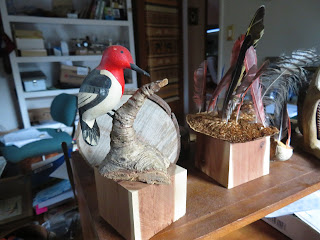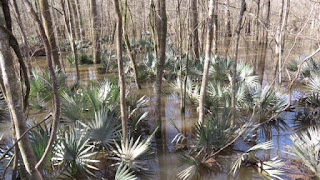This is the first Red Headed Woodpecker I have seen on our property. It has taken up residency in the large Red Oak just outside the kitchen window in the area we call the "squirrel yard".
For the past week, it has been picking up corn I have spread out, and taken it up on the Oak to a cavity which may be its mate's nest.
Such a colorful bird gets a lot of attention. This one spends much time with me, atop my desk.
This one makes the cover of a child's introduction to birds book.
Originally copyrighted in 1906, this 1951 edition of Charles A Reed's field guide says they are ruffians of the family and are quarrelsome.
Birds of America copyright 1917, this is the 1936 edition. It says, "He wears the German flag".
 Today's flag which was adopted in 1989.
Today's flag which was adopted in 1989.
The Red Headed Woodpecker does not have any yellow coloring.
The Bird of America by the great John James Audubon. This is the 1942 edition. Audubon would have first published these from 1827-1838.
They say it is good luck if a woodpecker knocks on your door.

















































